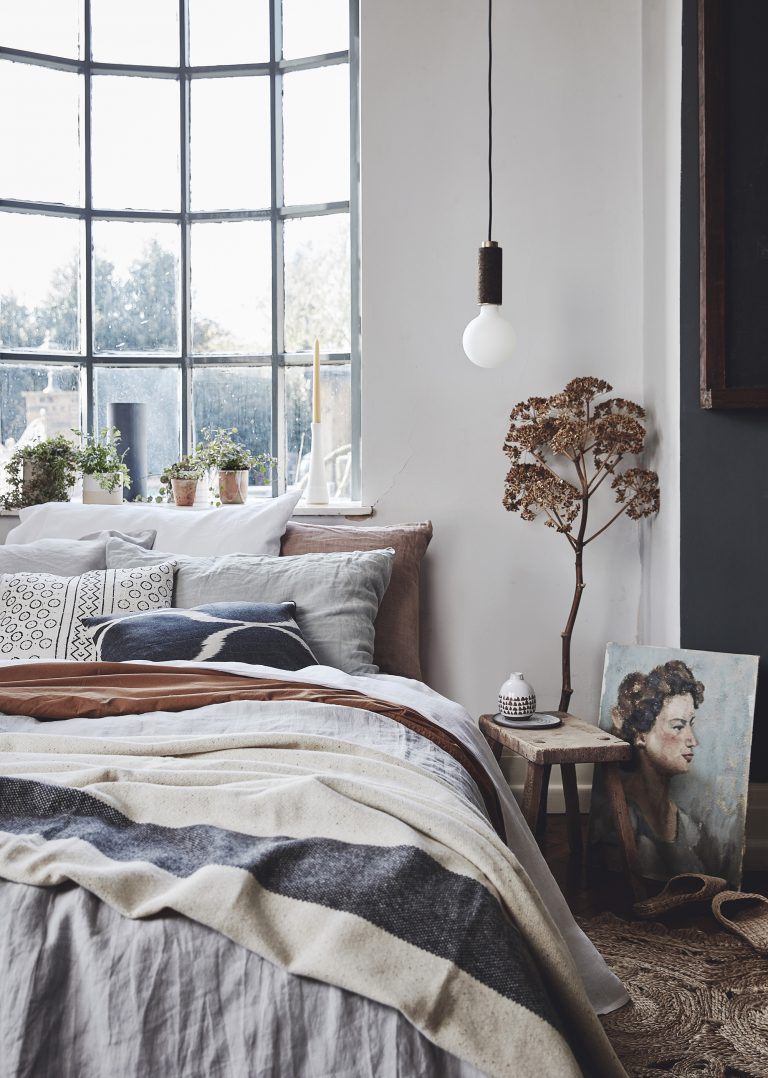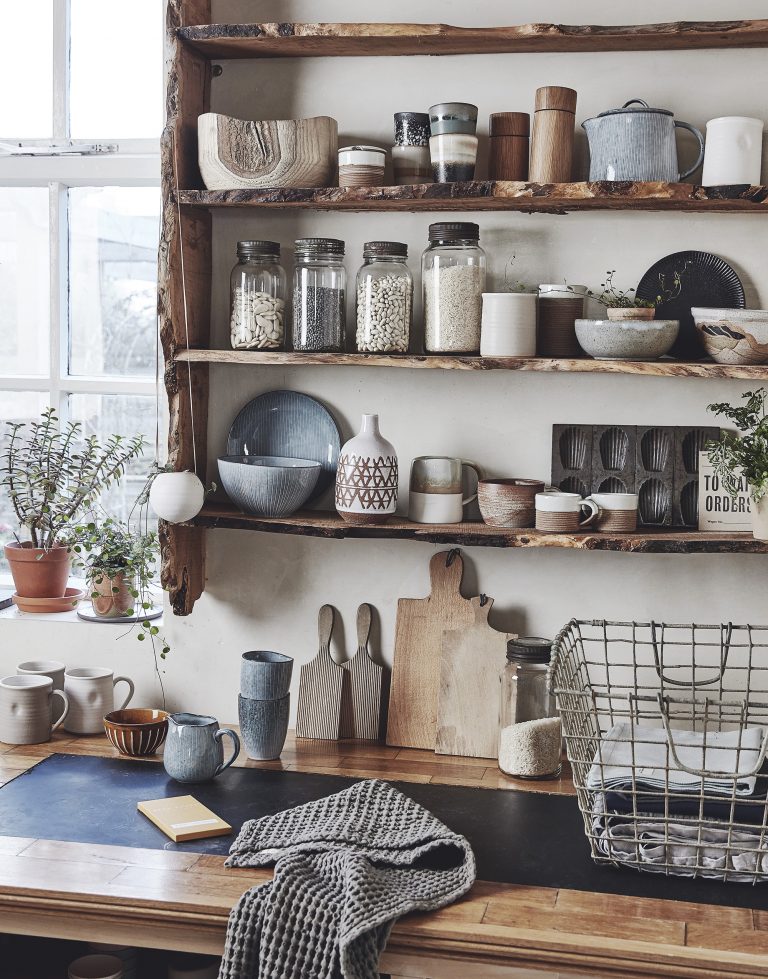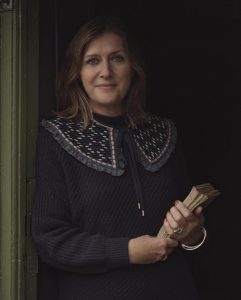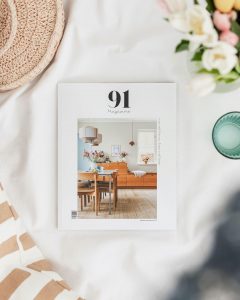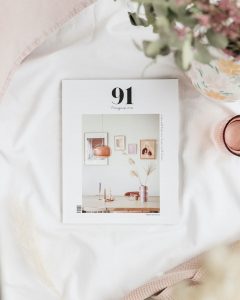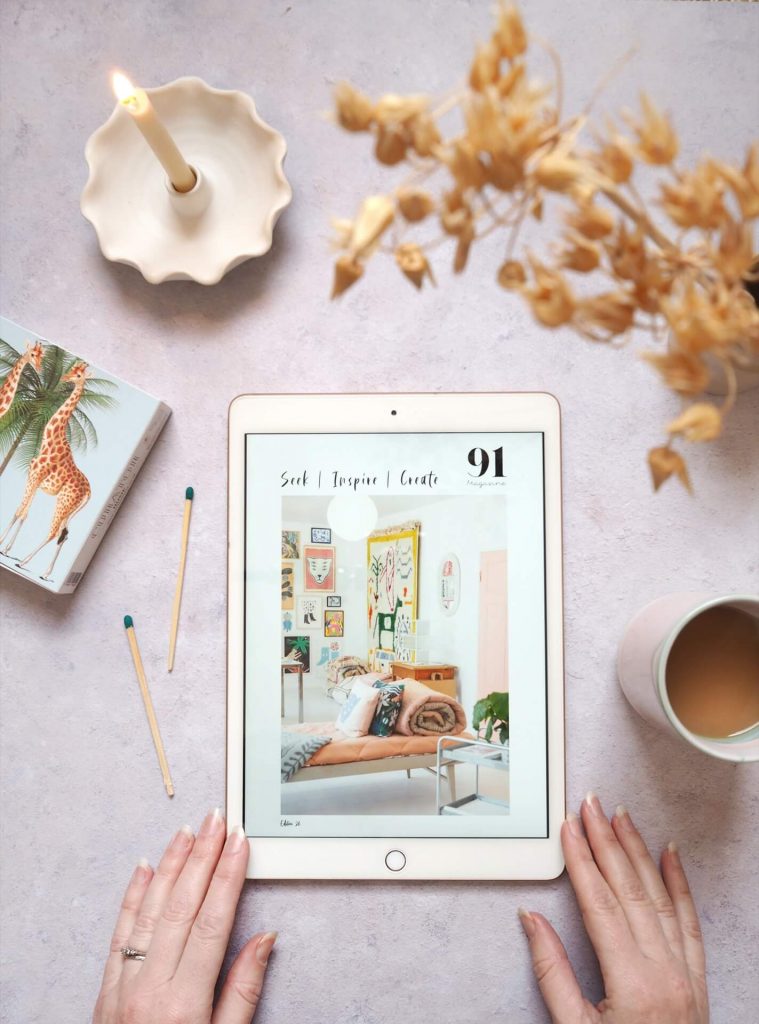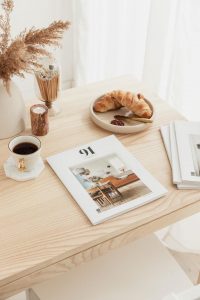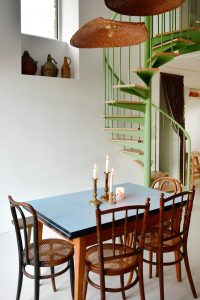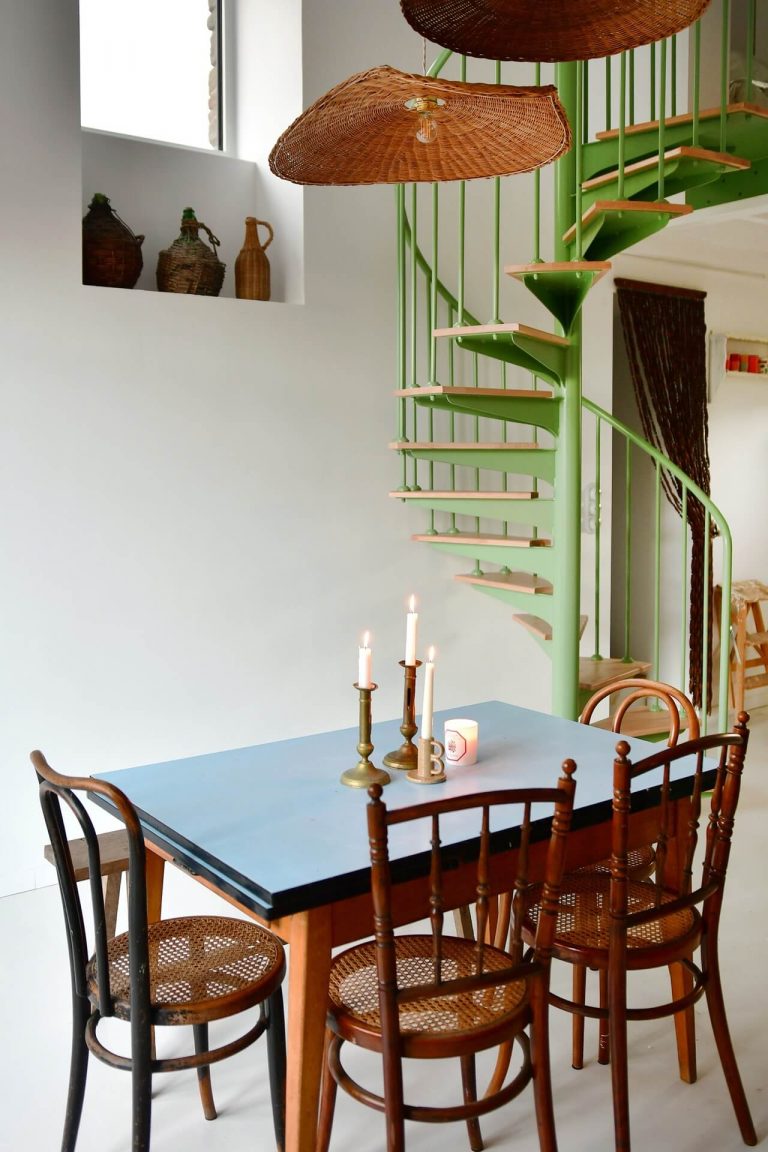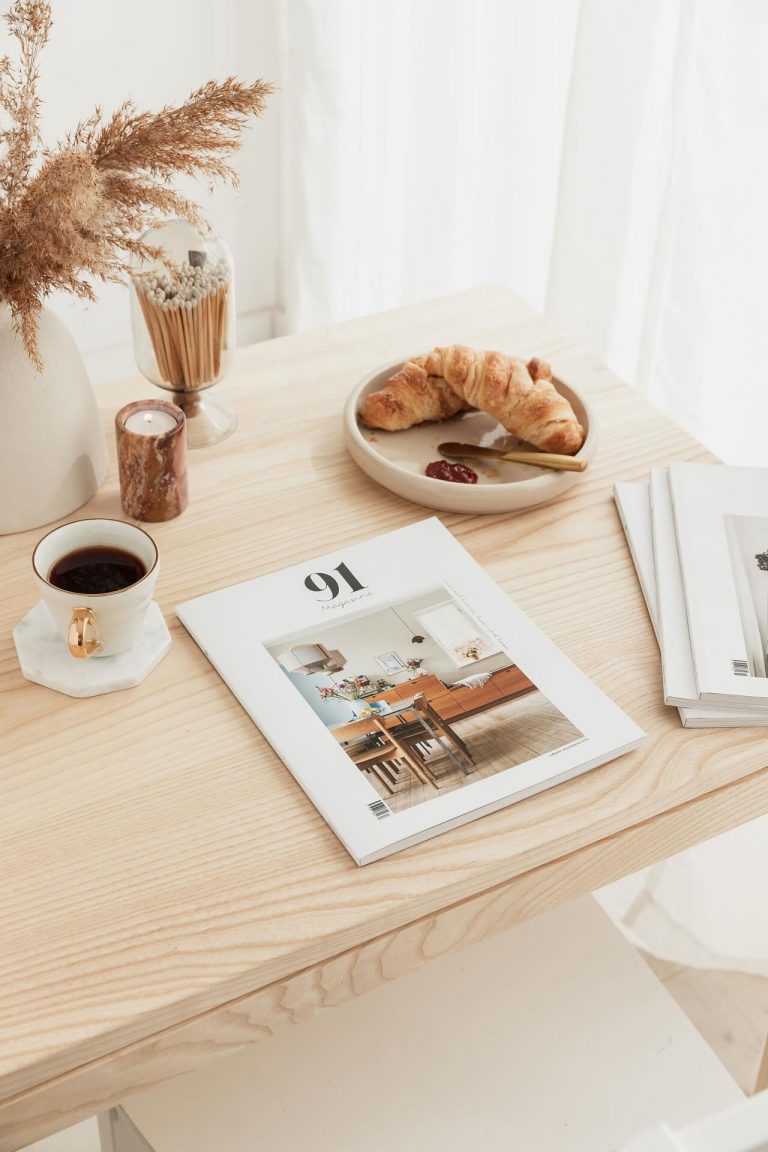It wasn’t so long ago that the mention of eco-friendly homewares conjured up images of bland and boring, non colour, scratchy fabrics and furniture made from old shopping trolleys and repurposed tyres.
With much more awareness to the damage being done to our planet from plastics and overflowing landfills, designers have started exploring more sustainable alternatives and natural materials and even some high street retailers are now producing eco lines to sit alongside their main ranges, such as H&M Home’s Conscious range.
Creating an environmentally-aware home has never been easier and the choice of products never more abundant, but there’s still confusion for consumers about what actually constitutes ethical?
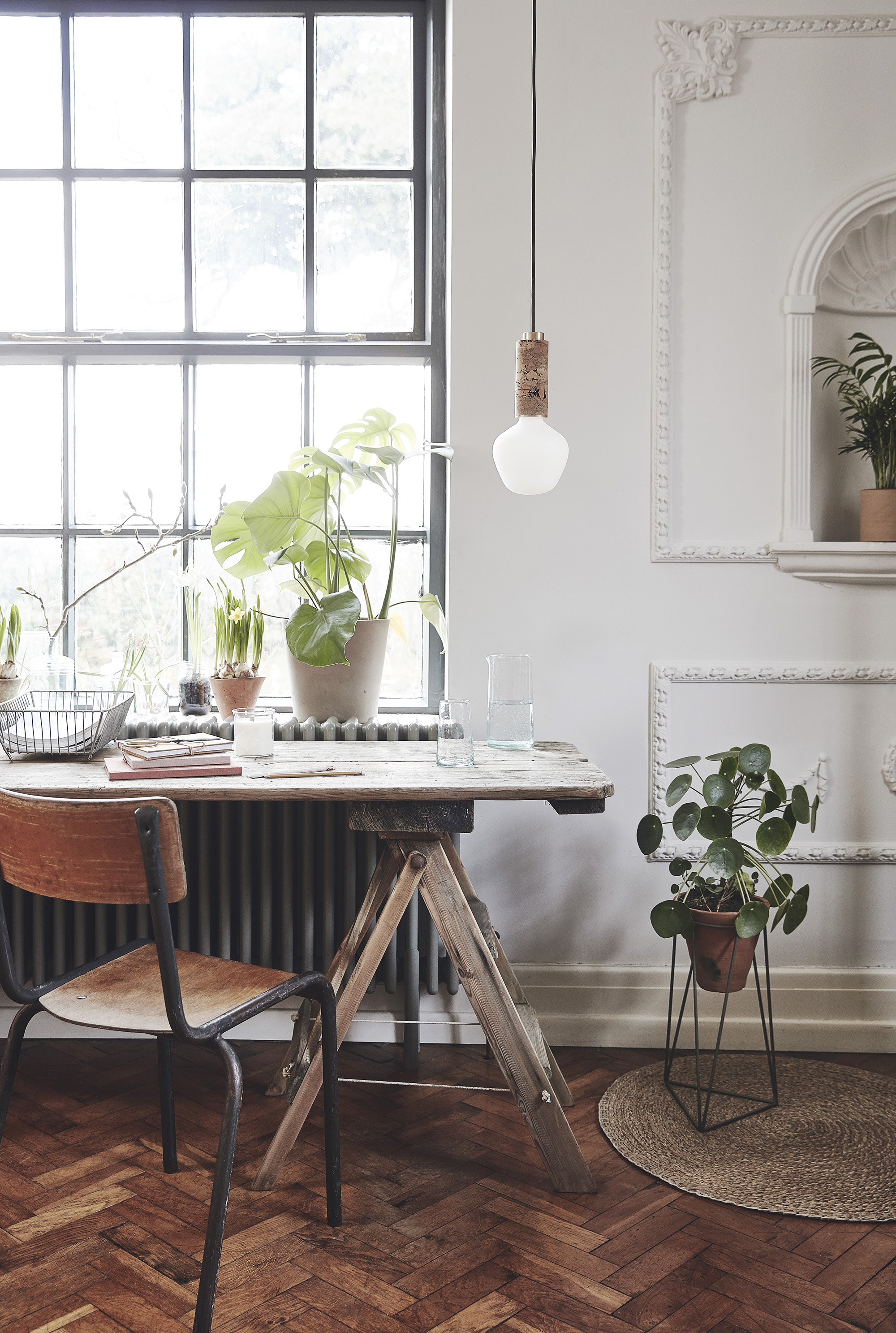
Recycled, repurposed items
One of the areas of product design that has evolved the most is the use of repurposed items to create covetable homewares. Pioneers in this area such as London-based salvage company Retrouvius and Herefordshire-based Baileys Home have paved the way, demonstrating the use of industrial salvage within our homes, in a cool and interesting way. Items that would have been destined for the skip such as old school chairs, factory lights and redundant retail signage are now making a design statement within our homes.
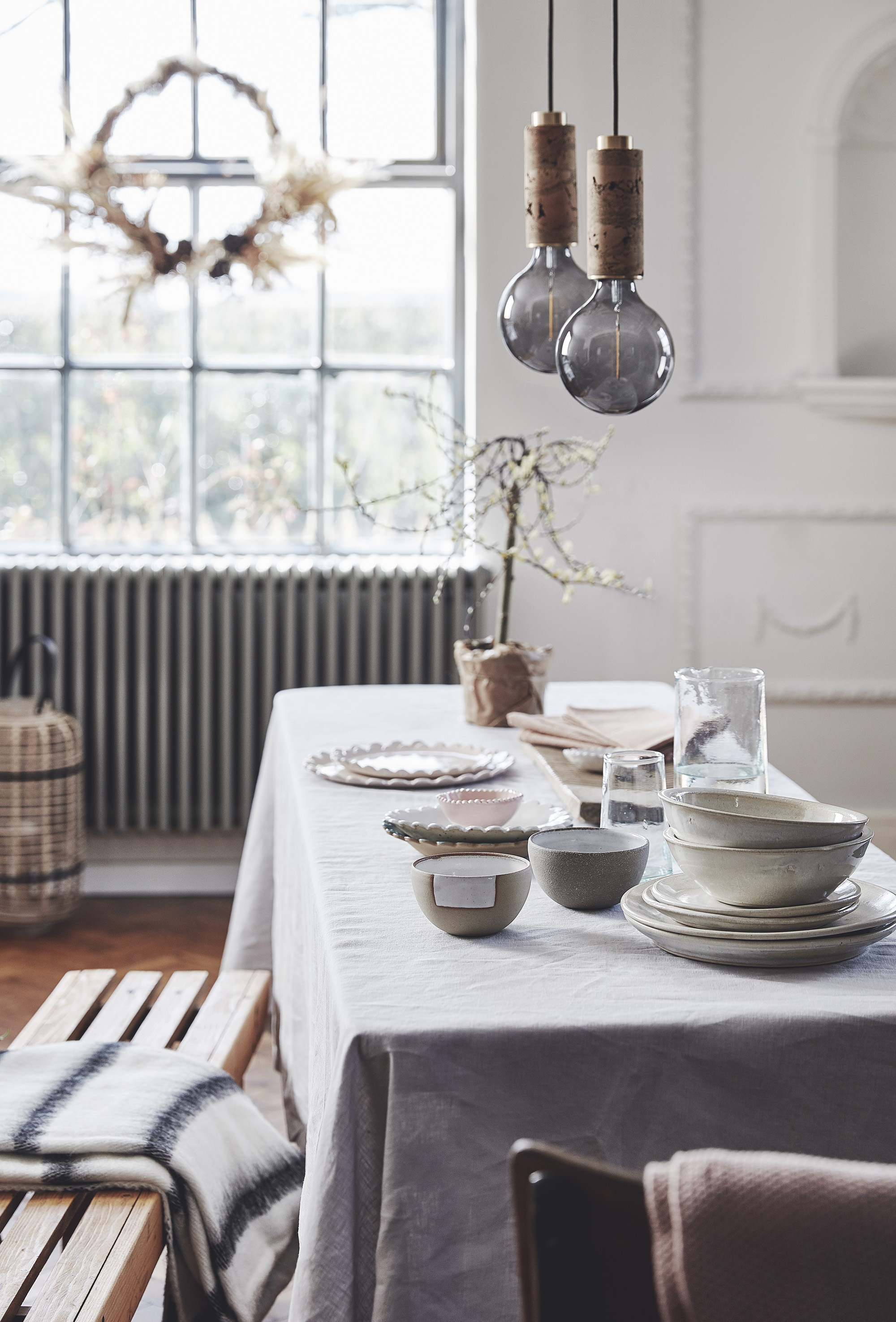
Handmade objects
As we become ever more removed from the physical world through social media, email, online banking & internet shopping, we crave connection with the real world. Buying hand-crafted items, with all their imperfections and individuality, created by the human hand, helps us to feel grounded and connected. The recent rise in popularity of handmade pottery and tableware is no coincidence. It reconnects us to the earth in an increasingly unstable world. It is both practical and beautiful, reasonably affordable and collections can be added to gradually. One of the founders of The Arts & Crafts Movement, John Ruskin, believed “Fine Art is that in which the hand, the head and the heart of man go together.”
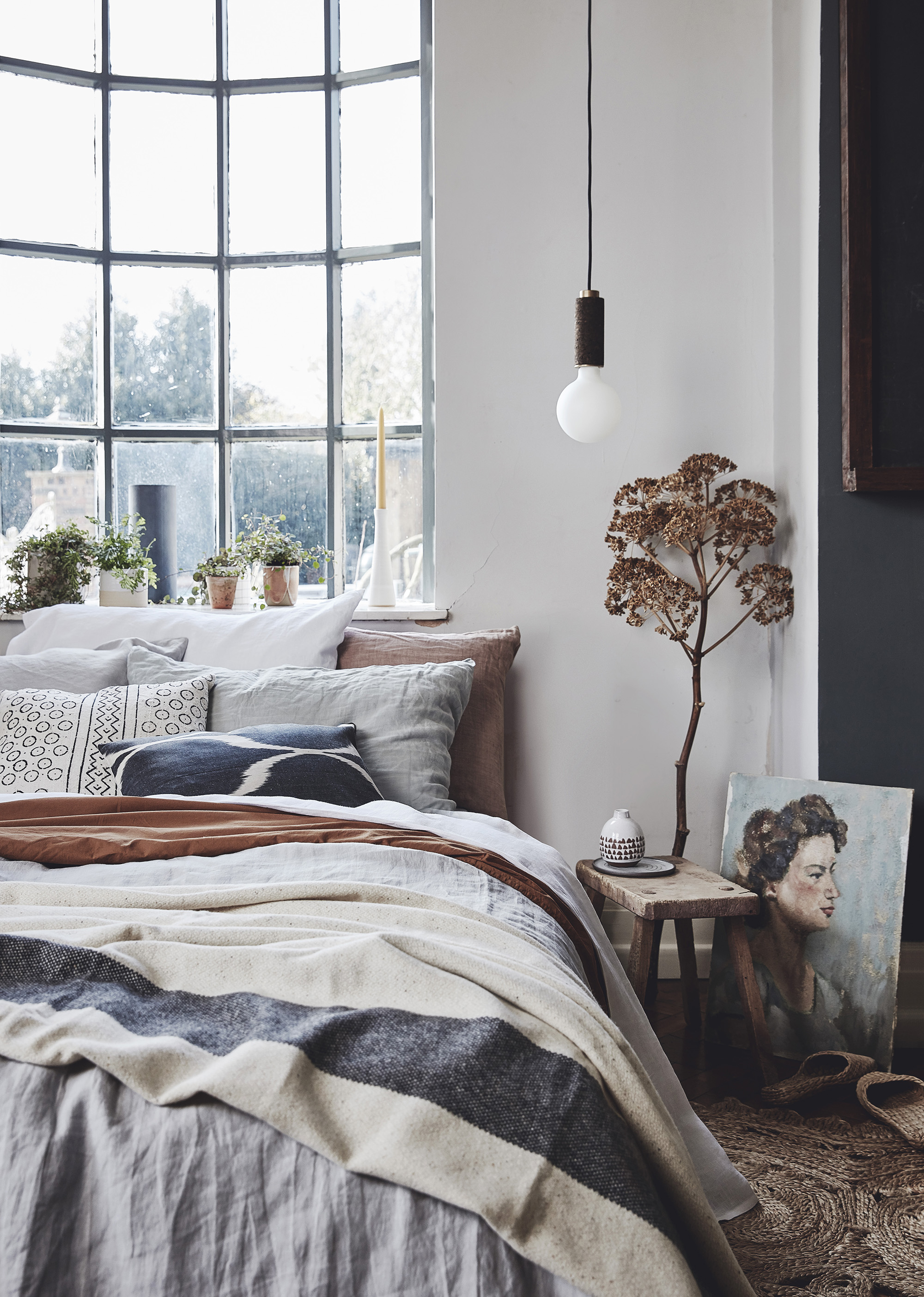
Sustainable and natural materials
The trend for natural linen bedding over the last few years has largely been driven by both its aesthetic quality and our growing environmental awareness and better knowledge of manufacturing techniques. Linen, bamboo, hemp and organic cotton bedding and fabrics are produced without the use of pesticides and chemicals. Both linen and hemp are extremely durable fabrics which should last a lifetime. Avoid any fabric product that says non-iron on the packaging, this will have been produced using petroleum.
Look out for cork homewares for an ethical option. Cork is probably one of the most naturally sustainable materials, regenerating itself repeatedly, growing back under the bark of the tree after it has been harvested. The tree can be harvested many times during its lifetime, which can be as long as 200 years.
Natural flooring such as sisal, coir & seagrass are also both tactile and practical and rug companies such as Armadillo produce beautiful decorative designs. Reclaimed timber flooring, although expensive, creates a surface that at once looks inviting and warm and with a beautiful patina created over years of wear. Look to use parquet floor reclaimed from old school gyms or iroko and teak worktops from old school labs. These can all be sourced from salvage yards. Look at Salvo for a guide to some of the best and check auction sites, one person’s scrap is another’s gold.
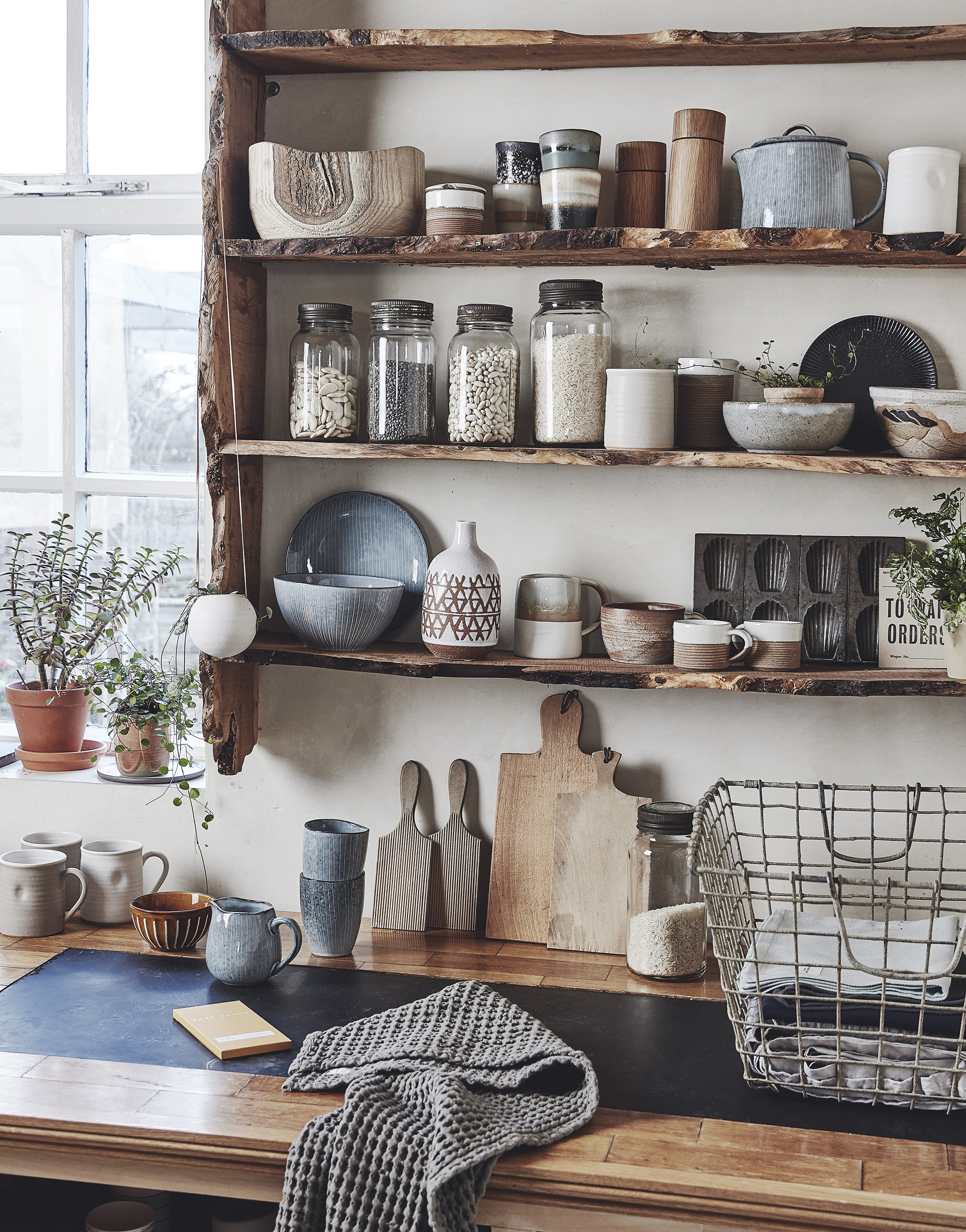
Add contrast to your interior
The most interesting interiors play with contrast, rough with smooth materials such as marble with wood and polished concrete with stainless steel. Juxtaposing old with new is a perfect way to create eclectic, interesting décor. Mix sleek contemporary designs with vintage and salvaged items, hand-crafted items with foraged and found pieces. A perfect example of how beautiful this can look is the Japanese technique of Kintsugi, the art of repairing broken pottery with lacquer mixed with precious metal.
Buy Local when possible
The distance some items have to travel from production to consumer, impacts on its carbon footprint. Lots of small independent shops stock products made within the UK and many stock local makers and artists work. Also trawl maker markets and vintage homewares events in your area, such as The Vintage Home Show. Seek them out and your home will have an individual look and a story attached to every piece within it. It’s always interesting to know the provenance of a piece. Another great idea is to attend a workshop with a maker – learn a new skill while also making something truly individual.
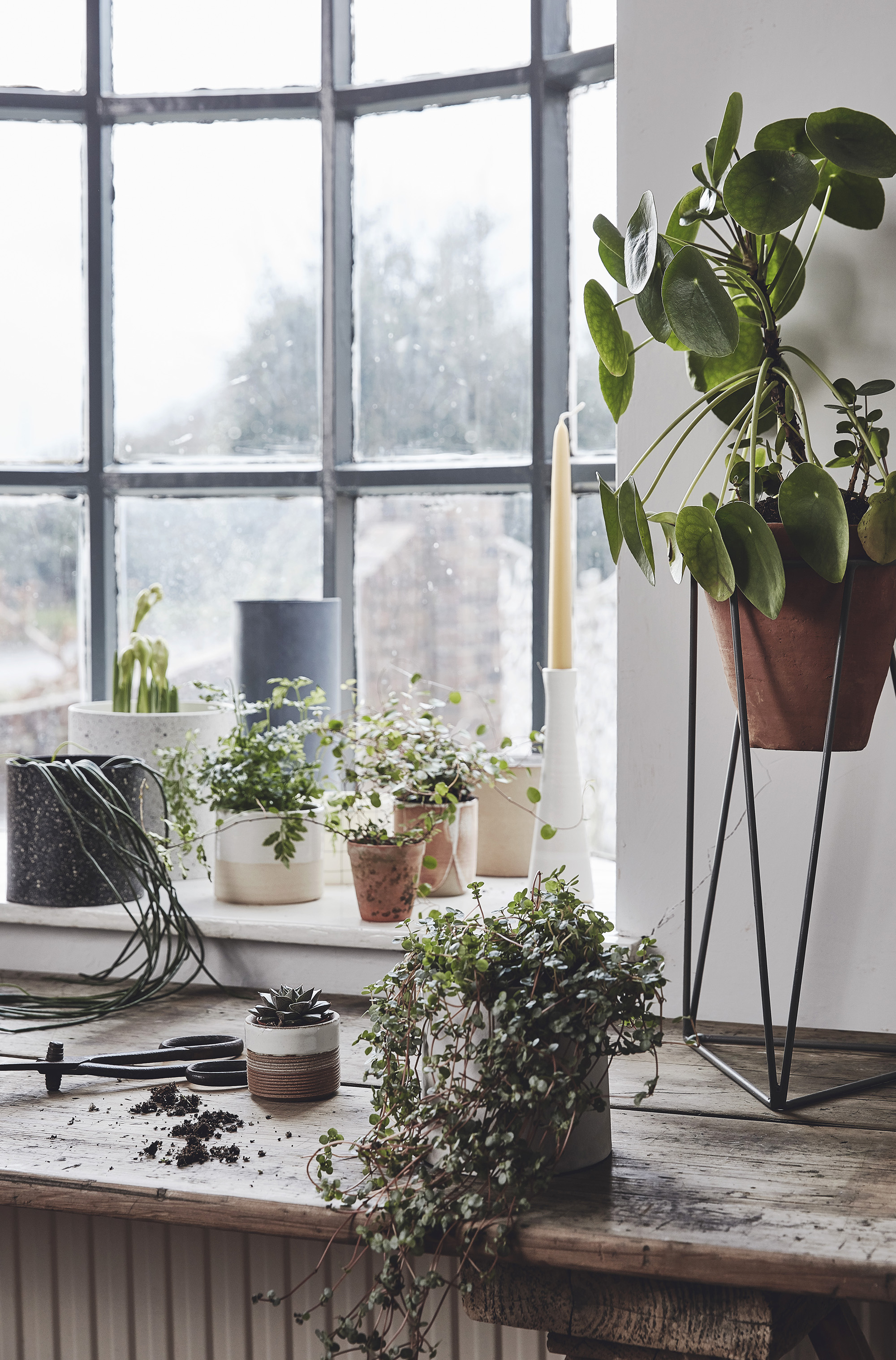
Go Green
With so many of us working from home on our laptops & computers and shopping from our phones, it’s no surprise that one of the biggest trends to emerge over the last few years is the return of house plants. These little green babies are adept at soaking up carbon monoxide and releasing oxygen as they photosynthesis, purifying the air for us. Surround yourself with them and make your home an urban jungle. Many towns and cities have seen dedicated plant shops opening up, where you can purchase unusual species and receive the specialist knowledge required to care for them.
Use low or non-VOC paints
Traditionally household paints contained VOC’s – ‘Volatile organic compounds’ – or chemicals which gave them their strong smell which could be toxic and in some cases cause ill health. Many companies started produce low-VOC paints. Low however, only actually means compared to other paints on the market. There are currently no regulations to define low. But now there are brands producing non-VOC or eco paints which can be determined by checking the label: look for wording such as non-toxic or natural. These are microporous and allow the walls of the building to breath and are ideal for period properties. They also often provide a lovely chalky matt finish.
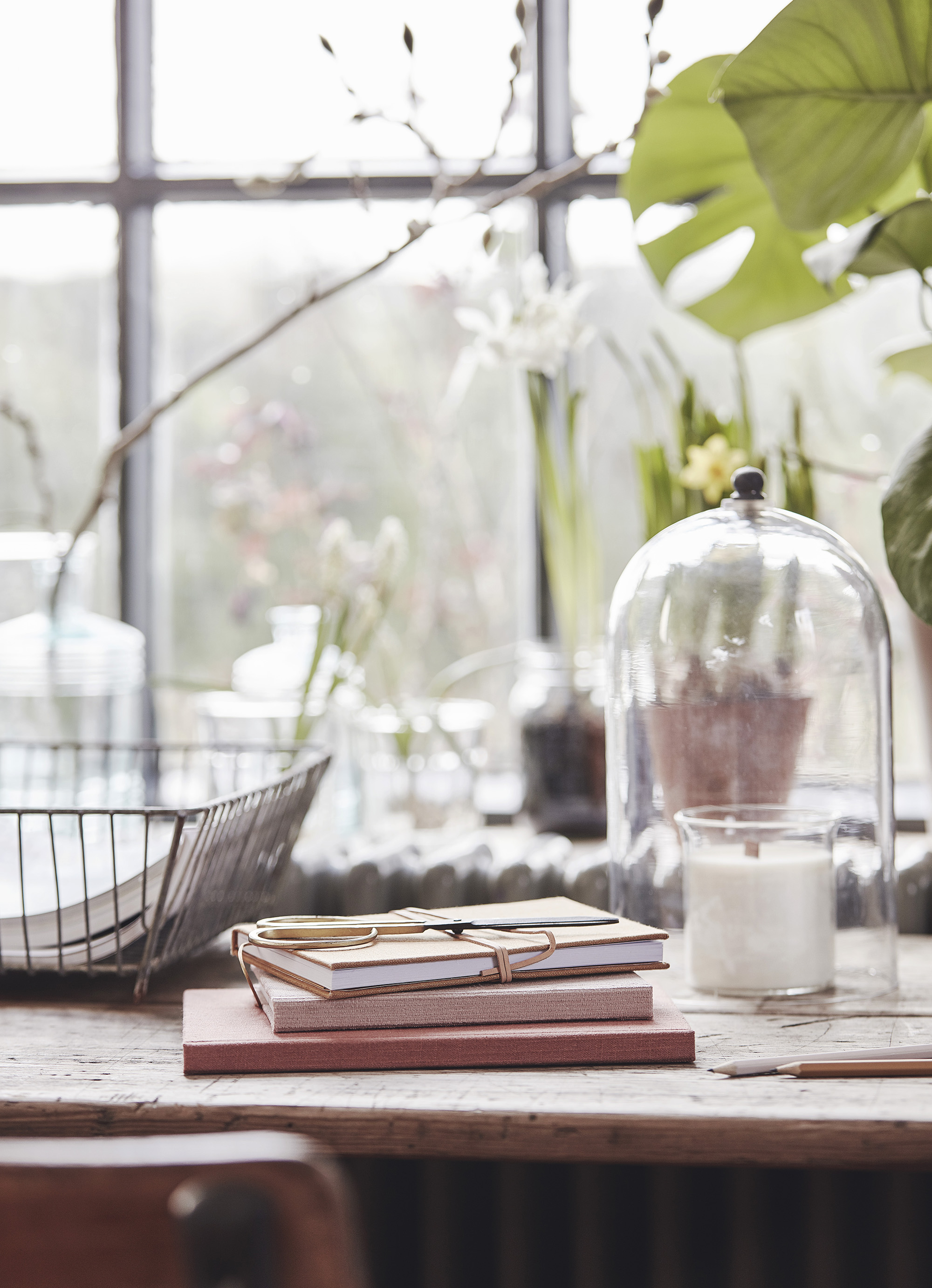
Natural fragrances
We all like our homes to smell lovely and fragrances help to discard cooking and pet smells. An alternative to toxic, chemically-produced sprays and plug ins are soy-based candles made with naturally-scented oils – an effective and eco-friendly way to fragrance your home. If the candle is in a recycled or repurposed vessel, even better. Online retailer Orchard Cheshire sell some lovely vegan candles in repurposed vintage French confit jars. There are also some beautiful exotic smelling incense sticks and cones widely available which emit a fragrance when they are burned and natural reed diffusers with essential oils are very effective and long lasting.
Thanks to Karen and Kirsty for all of this sage advice and lots of shopping tips too. Be sure to check out Kirsty’s gorgeous cork lighting at Nove Lighting and Karen’s fab vintage finds at The Old Potato Store.
Photography by Si Thompson / Words & Styling: Karen Barlow / Styling: Kirsty Saxon
